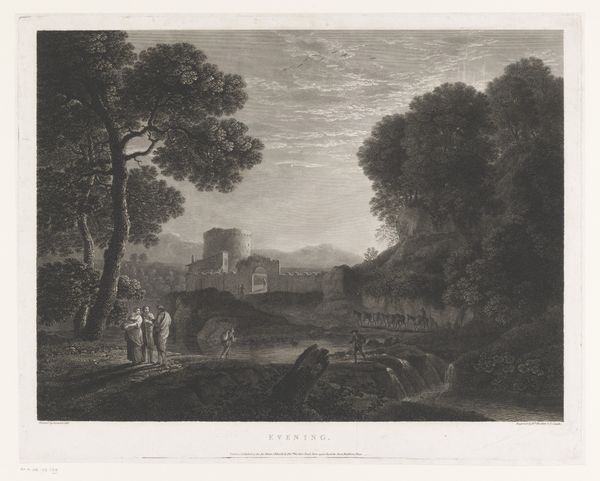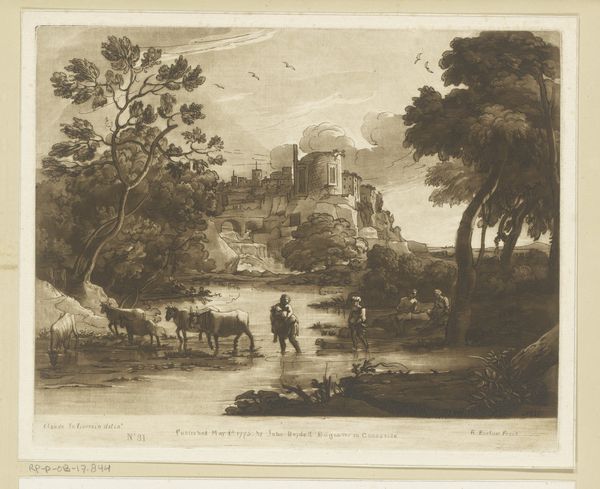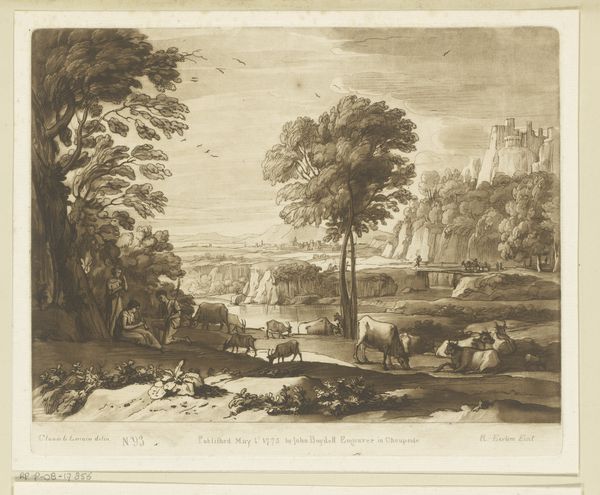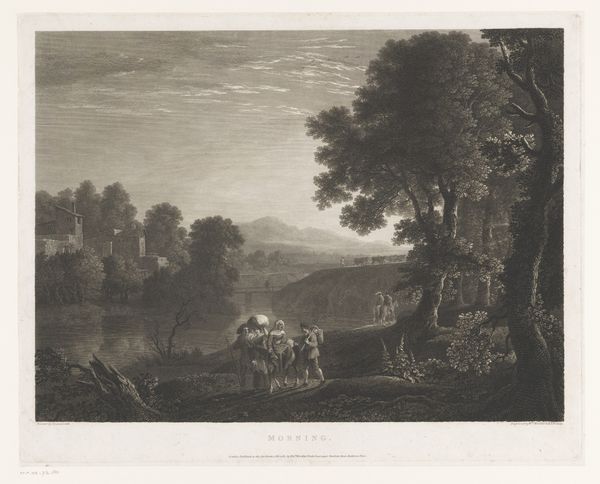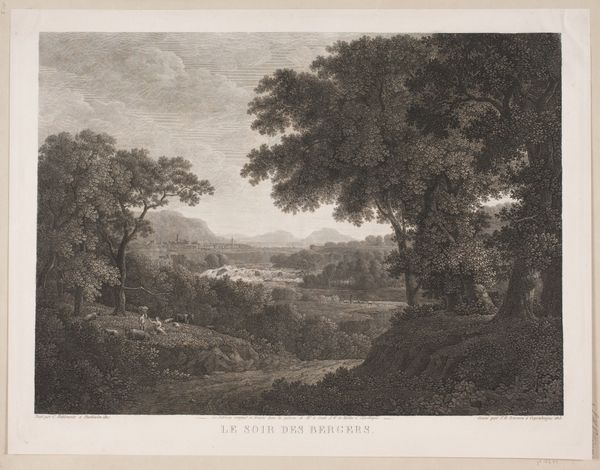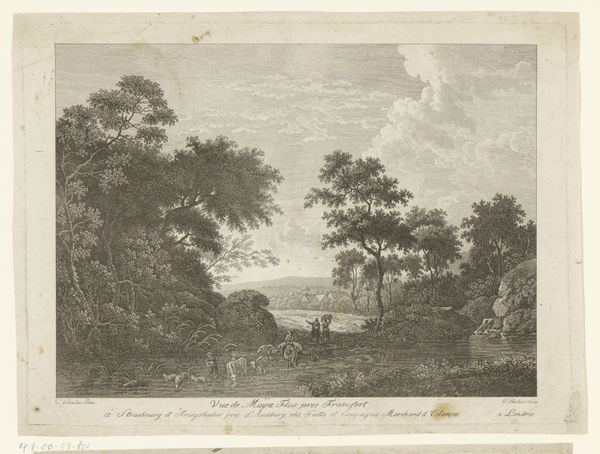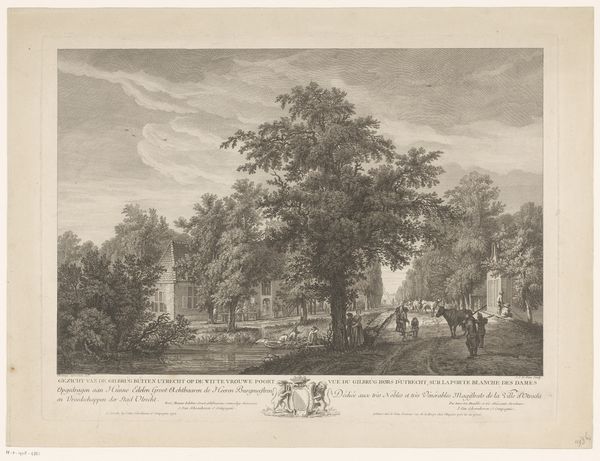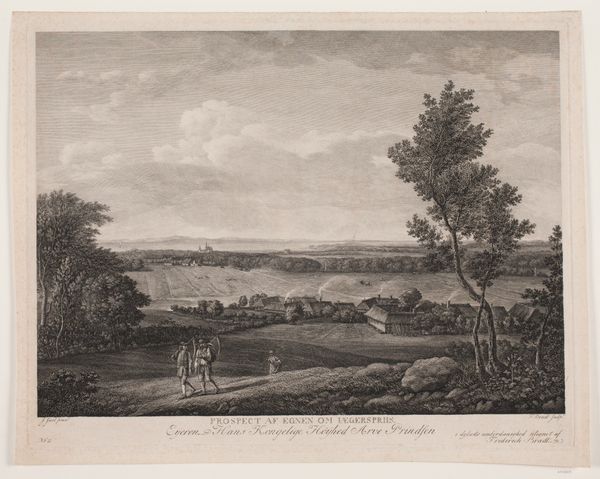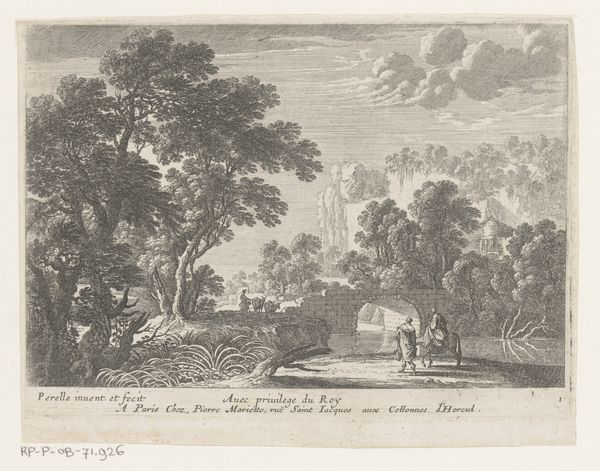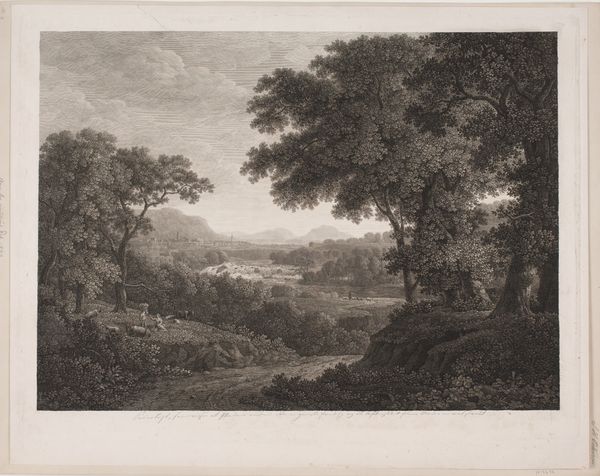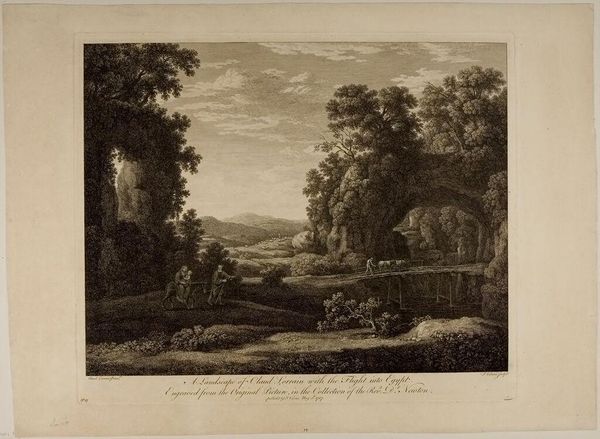
plein-air, engraving
#
neoclacissism
#
plein-air
#
landscape
#
classicism
#
history-painting
#
engraving
Dimensions: height 434 mm, width 546 mm
Copyright: Rijks Museum: Open Domain
Curator: Let’s talk about John (I) Pye's "Landschap met kudde en herders bij een doorwaadbare plaats", an engraving from around 1775. Editor: Wow, that's quite a mouthful! "Landscape with Cattle and Shepherds by a Fordable Place"... The composition is quite striking, very picturesque. The details with people and animals together are incredible! How should we approach something that wants to appear as both history-painting and plein-air? Curator: The clue is perhaps right there! Consider the historical moment. Think about how ideas of the pastoral were being reshaped in response to growing urbanization. In a world increasingly defined by industry, images like these offered a vision of a harmonious past. But it's also a political statement. Who does this 'harmony' serve? Is it for everyone, or only a select few? Editor: So, you’re saying the image of tranquility is not as straightforward as it seems. But does this link to neoclassical values that were emerging then? I see elements of that. Curator: Exactly. Look at the composition, the idealized forms of the figures, even the ruins in the background evoke a sense of a classical past that's being invoked to lend authority to the present. Engravings played a key role here by making images accessible. These were commodities that shaped how the British saw themselves and their place in the world. It becomes less about art and more about a manufactured longing for simpler times! Editor: I hadn’t thought of the distribution aspect and political use of this kind of images. I guess it highlights the importance of looking at these works critically, not just aesthetically. It is way more nuanced than just beautiful landscapes. Curator: Precisely. The art world does not exist in a vacuum. Understanding these social, cultural, and economic layers provides a far richer reading of art history. Editor: I’ll definitely keep that in mind. Thanks, this has been incredibly insightful.
Comments
No comments
Be the first to comment and join the conversation on the ultimate creative platform.

